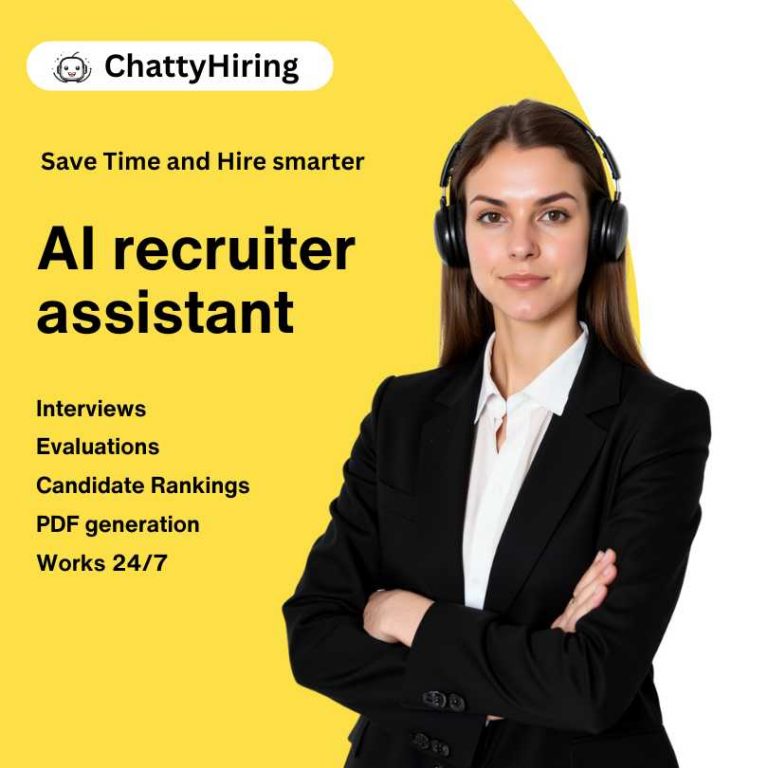CV screening for blue-collar positions focuses on identifying practical skills, relevant experience, and reliability, rather than formal education or lengthy resumes.
The key to effective screening is spotting clear evidence of job-specific abilities and a solid work history that matches what the job needs. This approach helps employers quickly find candidates who can handle the work efficiently.

Unlike white-collar roles, blue-collar jobs call for a different evaluation process.
Recruiters often use a mix of manual review and software tools to check resumes for essential qualifications, trade certifications, and training linked to the specific labor needed. This speeds up the hiring workflow while ensuring important details aren’t missed.
More information on blue-collar interview and screening methods can be found at Testlify.
Understanding CV Screening for Bluecollar Positions
CV screening is a key step in hiring blue-collar workers.
It helps recruiters identify candidates with the right skills, experience, and work habits needed for manual labor jobs. This screening should match the unique demands of blue-collar positions.
Definition and Importance
CV screening means reviewing and evaluating candidates’ resumes to find the best fit for a job.
For blue-collar hiring, this means zeroing in on practical skills, certifications, and relevant work history over academic degrees.
Screening saves time by filtering out candidates who don’t meet job requirements.
It also improves the quality of hires by matching candidates’ abilities with the job’s physical demands and safety standards.
Differences Between Bluecollar and Whitecollar Screening
Blue-collar screening prioritizes hands-on experience, skills, and job-specific training.
Recruiters look for evidence of manual labor expertise, like trade licenses or completed apprenticeships.
White-collar screening usually relies more on degrees and detailed career progression, while blue-collar screening checks for practical ability and reliability.
Challenges Specific to Manual Labor Roles
Screening CVs for manual labor jobs brings unique challenges.
Candidates may have picked up skills through informal training or on-the-job experience, which is harder to verify with a traditional resume.
Some blue-collar workers might have gaps in employment or nonstandard work histories.
Recruiters need to assess these factors carefully to avoid missing excellent candidates while keeping safety and performance standards high.
Using practical tests alongside CV screening can help confirm skills when a written work history is unclear.
This blended approach improves the accuracy of blue-collar hiring decisions.
Key Steps in the CV Screening Process

A clear understanding of the job and well-defined criteria are vital for effective candidate selection.
Precise job descriptions and focused shortlisting help recruiters find the most qualified applicants quickly and fairly.
Job Analysis and Requirements
The first step is to analyze the job carefully.
This means looking at the tasks, skills, and working conditions involved. For blue-collar roles, physical ability, technical skills, and reliability often matter most.
Job analysis sets a clear list of job requirements to evaluate each CV against.
These requirements should separate must-have skills from nice-to-have qualities. For instance, if a forklift license is essential, candidates without it should be filtered out early.
This structured approach keeps the process consistent and ensures only candidates who meet the real demands of the role move forward.
Preparing Effective Job Descriptions
A detailed job description guides both the recruiter and the applicant.
It must clearly state the key duties, physical demands, work hours, and any certifications needed.
Including concrete details like shift times, pay range, or safety requirements helps attract the right candidates.
Vague descriptions lead to unsuitable applications and wasted time.
The job description should highlight essential skills and qualifications upfront.
This acts as a checklist for screening and makes the shortlisting process smoother.
Sourcing and Shortlisting Qualified Candidates
Once applications arrive, screening starts by comparing CVs to the job description.
Recruiters look for proof of required skills, experience, and certifications.
A simple scoring system can help, awarding points for each key qualification found.
This keeps shortlisting fair and transparent.
For example, a candidate with the needed licenses, relevant job history, and solid attendance records scores higher.
Those without core qualifications can be quickly removed from the pool.
Thorough shortlisting saves time and focuses interviews on candidates with a strong chance of success.
It also reduces hiring risks by prioritizing relevant experience.
More details on this process can be found in best practices for blue collar interviewing and screening.
Essential Skills and Attributes for Bluecollar Candidates

Blue-collar workers need a mix of specific technical abilities and personal qualities to succeed.
Practical skills, reliability, and safety knowledge often weigh more than formal education.
The right blend of hard and soft skills helps candidates perform well in hands-on roles and adapt to different job demands.
Core Hard and Soft Skills
Hard skills include technical know-how like operating machinery, using tools, and understanding materials.
Candidates must show manual dexterity, mechanical knowledge, and the ability to follow complex instructions.
Soft skills are just as important.
Communication, teamwork, and problem-solving abilities help workers collaborate and adjust to changing tasks.
For example, clear communication reduces mistakes on the job site.
Physical stamina and time management also support productivity in demanding environments.
Employers often test for a mix of these skills to find workers suited to specific roles.
Transferable Skills
Transferable skills are strengths learned in one job that apply to others.
For blue-collar roles, these include adaptability, basic computer proficiency, and a solid work ethic.
Candidates with experience in related trades bring value because they can quickly learn new techniques.
For instance, someone skilled in plumbing might adapt easily to pipefitting or welding roles.
Transferable skills also cover soft skills like conflict resolution and reliability.
These help workers maintain good relationships and job stability across industries.
Attention to Detail and Safety Awareness
Attention to detail is crucial for quality and precision.
Blue-collar workers must spot errors before they become problems. This skill reduces waste and boosts efficiency.
Safety awareness is non-negotiable.
Knowledge of workplace safety protocols and standards protects workers and prevents accidents.
Candidates should understand personal protective equipment, hazard identification, and emergency procedures.
Employers prioritize safety-conscious candidates to keep the work environment secure and comply with regulations.
Both detail focus and a safety mindset reflect professionalism and responsibility.
For more on testing blue-collar skills, see Blue Collar Assessment.
Utilizing Technology in CV Screening
Technology helps recruiters quickly manage large numbers of job applications and spot the best candidates.
It saves time, improves accuracy, and ensures fair screening for blue-collar positions.
Applicant Tracking Systems (ATS)
Applicant tracking systems (ATS) automate the handling of job applications from the moment they arrive.
ATS software reads and organizes resumes, extracting key info like skills, work experience, and certifications.
This automation speeds up the process and reduces errors from manual sorting.
ATS also stores all applications in one place, making it easy for recruiters to track candidates and review their status.
Many ATS platforms can be customized for blue-collar roles by adjusting criteria to focus on relevant skills or licenses.
This helps recruiters find candidates who match the specific qualifications required for trades or manual work.
Automated Shortlisting and Filtering
Automated shortlisting uses software to rank or filter candidates by matching CV info to job requirements.
It scans resumes for keywords related to experience, certifications, and skills.
This filtering narrows down the pool of applicants quickly.
It ensures that only candidates who meet the minimum criteria move forward, saving recruiters hours of initial review.
For blue-collar jobs, these tools can be tailored to screen for safety training, machinery skills, or other job-specific qualifications.
This customization boosts the quality of hires by focusing on what matters most for the role.
Automated systems also help keep things fair by reducing unconscious bias during initial screening.
This can be key in creating a more diverse and merit-based hiring process.
For more on ATS benefits in blue-collar hiring, see Unlocking Efficiency: ATS Integrations for Blue-Collar Recruitment.
Eliminating Unconscious Bias in Bluecollar Hiring
Unconscious bias can affect decisions about candidates without the hiring team realizing it.
These biases may influence how a person’s skills and experience are judged, often based on factors unrelated to job performance.
Tackling bias is key to fairer hiring and finding the best fit for blue-collar roles.
Recognizing and Addressing Bias
Unconscious bias often shows up as assumptions about a candidate’s background, age, or cultural fit.
For example, a recruiter might favor someone who looks or sounds familiar, even if it’s not relevant to job skills.
This can limit diversity and exclude qualified applicants.
Training can help teams spot these biases.
Labeling types of bias, like affinity bias where people prefer those like themselves, makes bias easier to recognize.
When hiring managers know what to watch for, they can challenge first impressions and focus on objective facts.
Strategies for Inclusive Selection
Blind screening is an excellent way to limit bias.
It removes identifiable information, such as names, gender, or photos, from CVs so hiring decisions are based on skills and experience alone.
Assigning numeric IDs to applications supports this approach.
Structured interviews or skills tests also reduce bias by using consistent criteria for all candidates.
Clear guidelines help ensure that cultural fit is considered carefully, focusing only on traits relevant to the role.
This keeps the selection process fair and skill-based.
For more details, see strategies to reduce bias in hiring from Adecco UK.
Enhancing the Candidate Assessment Process
Effective candidate assessment for blue-collar roles uses multiple evaluation methods.
This ensures candidates not only have the right skills but also fit the job demands and workplace culture.
Skills Assessment and Testing
Skills assessment checks the specific abilities needed for a job.
Tests often focus on technical knowledge like operating machinery, basic math, or reading blueprints.
These assessments can be written or digital, but it’s smart to make them mobile-friendly since many blue-collar candidates prefer using smartphones.
The goal is to measure job-relevant skills objectively, such as accuracy, speed, and understanding.
Employers benefit when they identify candidates who already have the essential skills, reducing training time and boosting productivity.
Practical Assessments and Job Trials
Practical assessments involve hands-on tasks that mimic day-to-day work.
Examples include assembling parts, operating equipment, or performing safety checks.
Job trials give candidates a chance to work on-site for a short period before hiring.
These methods reveal if candidates can perform the actual job duties under real conditions.
They also show attitudes toward work, such as reliability, attention to detail, and teamwork.
Practical assessment and job trials reduce hiring risks by showing true abilities beyond resumes or interviews.
Reference and Background Checks
Reference checks verify candidate work history and behavior from previous employers or supervisors.
This provides insight into attendance, work ethic, and interpersonal skills.
Background checks may include criminal history or verification of certifications relevant to safety or licenses.
These steps help confirm the candidate’s honesty and reliability.
They protect companies from hiring individuals who may pose risks or don’t meet job requirements.
Reference checks add a layer of confidence to the candidate assessment process.
Personality Tests and Soft Skills Evaluation
Personality tests measure traits like communication, teamwork, and stress management.
These soft skills are crucial in blue-collar roles where workers often collaborate or work under pressure.
While not the main focus, assessing personality helps predict how well a candidate will fit with the team and company culture.
Soft skills evaluations can be done through behavioral questionnaires or structured interviews.
They provide balanced information to complement skills testing, making sure the candidate’s attitude supports long-term success in the role.
Improving Candidate Experience in Blue-Collar CV Screening
A positive candidate experience helps attract skilled workers and reduces dropout rates.
Clear communication and timely feedback keep candidates informed and engaged during the recruitment process.
These elements build trust and respect between applicants and employers.
Transparent Communication During the Hiring Process
Transparent communication means sharing clear information about the job, responsibilities, and recruitment steps upfront.
Candidates should know what to expect at each interview stage, including timelines and requirements.
Employers can use straightforward language to avoid confusion.
Providing regular updates through email or phone helps candidates feel valued and less anxious.
A clear process outline prevents misunderstandings.
For example, letting candidates know when they will hear back after screening or interviews keeps them engaged.
This openness encourages candidates to stay interested and prepared.
Feedback at Each Stage
Giving feedback after every interview stage improves candidate engagement.
Even brief messages about progress or areas to improve show respect for their time and effort.
Feedback should be specific, honest, and polite.
For example, highlighting skills that need development or explaining why a candidate did not move forward helps them grow.
This practice also enhances employer reputation.
It signals a commitment to fairness and helps candidates prepare better for future interviews.
Employers who provide feedback stand out in blue-collar talent acquisition.
It also reduces frustration and keeps communication clear throughout the interview process.
Optimizing Job Advertisements and Applications
Creating job ads that clearly state what the position requires helps attract the right candidates.
Designing applications to gather key details about skills and experience makes screening faster and more accurate.
Crafting Clear Job Advertisements
Job advertisements should be specific and straightforward.
They must list the exact skills, experience, and certifications needed for the blue-collar position.
Avoid vague terms and focus on concrete requirements, such as “forklift operation certification” or “5 years of plumbing experience.”
Use simple language and short sentences.
Highlight key points with bullet lists, such as:
- Job duties
- Required skills
- Work hours
- Location
Adding salary range or benefits can boost interest but keep it honest.
Clear ads reduce unqualified applications and save time.
Collecting Relevant Information in Applications
Applications should focus on gathering data that makes screening easier and faster.
Use structured fields like dropdowns or checkboxes for qualifications, licenses, and years of experience.
Include sections for:
- Contact information
- Work history relevant to the job
- Skill certifications
- Availability
Avoid long open-ended questions to prevent unnecessary information that slows review.
A well-built application aligns with the job ad, ensuring recruiters get the facts they need to decide quickly.
For more on effective job advertisements in blue-collar hiring, see this guide to efficient recruitment.
Retention and Long-Term Outcomes
Screening candidates carefully can improve how long blue-collar employees stay with a company and reduce the costs linked to replacing workers.
Effective screening helps match the right people to the job, which influences retention and lowers turnover.
Impact of Effective Screening on Retention Rate
Effective CV screening targets candidates with the right skills, work experience, and mindset.
Identifying applicants who meet job requirements and company culture reduces mismatches.
This leads to a higher retention rate because employees feel more competent and satisfied.
Screening also filters out candidates who may lack stability or commitment.
Stable workers contribute to consistent productivity and reduce disruptions from frequent hiring cycles.
Companies with strong screening processes often see retention improve by ensuring long-term fit.
Reducing Turnover Through Better Selection
Better selection during screening minimizes turnover by focusing on candidates likely to stay and grow.
This includes checking for reliable attendance records and positive work history.
Candidates who value job security and clear career paths usually stay longer.
Offering jobs with stability and clear expectations attracts workers intending to remain long term.
Screening can be designed to assess these preferences early.
Reducing turnover saves costs linked to training and lost productivity, helping companies maintain a skilled workforce.
For more strategies on retention in blue-collar roles, see effective approaches at https://www.linkedin.com/pulse/impact-employee-retention-productivity-blue-collar-sector-o4pzc.
Highlighting Quantifiable Achievements in Bluecollar CVs
Quantifiable achievements help bluecollar candidates show their true value to employers. Numbers provide clear proof of skills and results.
They make a CV stand out by showing what the candidate has actually accomplished. For example, you can highlight:
- Number of units produced or repaired
- Percentage of error reduction
- Speed improvements
- Safety records such as days without accidents
Using specific figures like “increased machine efficiency by 15%” or “maintained equipment for 50+ machines” gives employers a clear picture of your abilities. This also demonstrates reliability and hands-on experience.
It’s smart to tailor achievements to the specific job you’re targeting. Highlighting the most relevant accomplishments helps match the vacancy requirements.
A CV with targeted achievements is easier for talent acquisition teams and hiring managers to assess.
Employers prefer metrics that are easy to measure. A list format with clear numbers helps recruiters quickly scan and understand your background.
For instance:
| Achievement | Detail |
|---|---|
| Equipment maintained | Over 50 machines with zero downtime |
| Safety compliance | 300+ days without safety incidents |
| Production increase | Boosted output by 20% in six months |
Including quantifiable achievements shows your impact on the job. It gives hiring teams solid reasons to consider you for bluecollar roles.
-

A passionate advocate for the future of HR innovation. With expertise in leveraging AI to revolutionize recruitment processes, Carlos has a clear vision: empower HR teams while creating meaningful candidate experiences.
View all posts





